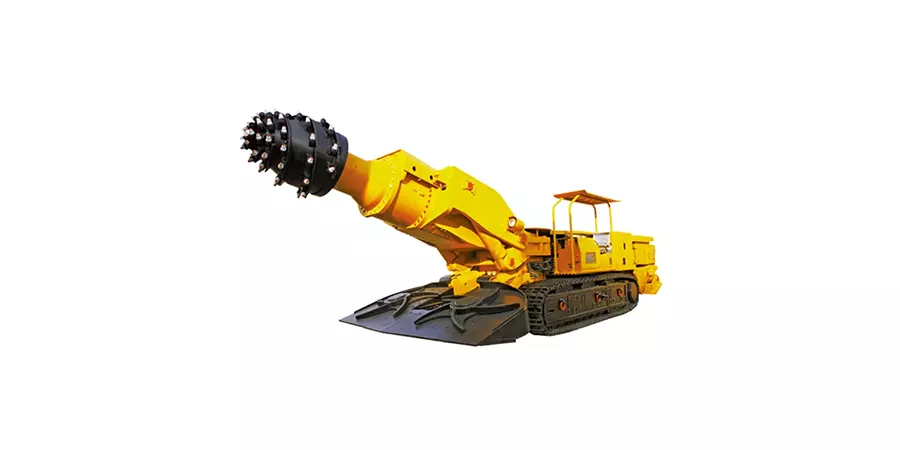Markets

Hydraulic Products Used in Tunnel Boring Machines (TBMs)
Tunnel Boring Machines (TBMs) rely on advanced hydraulic systems to perform critical functions such as thrusting, cutting, steering, and material handling. Below is a detailed breakdown of key hydraulic components and their roles in TBMs:
1. Thrust System Hydraulics
Thrust Cylinders
Ultra-high thrust capacity (3,000–5,000 kN per cylinder).
Long stroke (1–2 meters) and synchronized multi-cylinder control (precision ≤1%).
Hard-chromed rods and wear-resistant seals for longevity.
Function: Provide axial force to push the TBM forward against the tunnel face.
Key Features:
Hydraulic Power Units (HPUs)
Variable displacement axial piston pumps (e.g., Bosch Rexroth A11VO).
Redundant pumps for continuous operation during maintenance.
Function: Generate and regulate high-pressure fluid for thrust systems.
Components:
2. Cutterhead Drive System
Hydraulic Motors
Low-speed, high-torque radial piston motors (e.g., Danfoss T Series): Torque up to 500,000 Nm, speed 0–10 RPM.
Multiple motors in parallel for power redundancy.
Function: Rotate the cutterhead to crush rock or soil.
Types:
Technology: Closed-loop control for precise torque adjustment based on ground conditions.
Hydraulic Clutches and Brakes
Function: Engage/disengage cutterhead rotation and provide emergency braking.
Design: Multi-disc wet clutches with integrated cooling systems.
3. Segment Erection and Support Systems
Segment Erector Hydraulic Arms
6-axis hydraulic servo control for ±1 mm positioning accuracy.
Anti-vibration valves to stabilize movements in confined spaces.
Function: Precisely position and install tunnel lining segments.
Key Features:
Tail Seal Hydraulics
Proportional valves for dynamic pressure adjustment (0.5–3 MPa).
Nitrogen accumulators for emergency pressure retention.
Function: Maintain pressure on tail seals to prevent groundwater ingress.
Components:
4. Muck Handling and Slurry Systems
Screw Conveyor Hydraulic Drives
Closed-loop hydraulic circuits (e.g., Rexroth A4VG pumps + motors).
Automatic reversal to clear blockages caused by large debris.
Function: Control muck removal rates via variable-speed drives.
Technology:
Slurry Pump Systems (for Slurry TBMs)
Flow rates up to 2,000 m³/h, pressures up to 15 MPa.
Abrasion-resistant ceramic-coated components.
Function: Circulate bentonite slurry to stabilize the tunnel face.
Key Specs:
5. Steering and Guidance Hydraulics
Steering Jacks
Function: Adjust TBM alignment by varying thrust cylinder pressures.
Control: Electro-hydraulic proportional valves + laser-guided feedback (accuracy ≤0.1° deviation).
Gripper Systems (for Gripper TBMs)
High-pressure gripper cylinders (40–50 MPa).
Load-holding valves to prevent slippage.
Function: Anchor the machine against the tunnel walls during boring.
Components:
6. Auxiliary and Safety Systems
Emergency Hydraulic Supports
Function: Rapidly deploy roof supports in case of collapse.
Activation: Accumulator-driven systems with response times <1 second.
Cooling and Filtration
Hydraulic Oil Coolers: Maintain oil temperature below 60°C.
Filtration: Multi-stage filters (βₙ≥1,000 @ 10 µm) to combat abrasive contaminants.
Advanced Technologies
Digital Hydraulics:
IoT-enabled sensors monitor pressure, temperature, and wear in real time.
Predictive maintenance algorithms reduce downtime.
Energy Recovery:
Regenerative circuits capture energy during deceleration of cutterhead or conveyor systems.
Hybrid Drives:
Combine electric and hydraulic power for fuel efficiency (e.g., Liebherr Litronic systems).
Critical Challenges and Solutions
| Challenge | Solution |
|---|---|
| High-pressure seal failure | Double-lipped seals + PTFE coatings. |
| Abrasive particle contamination | Magnetic filters + offline filtration units. |
| Heat buildup in confined spaces | Compact plate heat exchangers. |
Leading Manufacturers
Pumps/Valves: Bosch Rexroth, Parker Hannifin, Kawasaki.
Cylinders: Enerpac, Hydac, Caterpillar.
Motors: Danfoss, Linde Hydraulics.
Summary
TBMs depend on a highly integrated hydraulic ecosystem to achieve precision, power, and safety in challenging tunneling environments. From mega-thrust cylinders to intelligent slurry systems, each component is engineered for reliability under extreme loads and harsh conditions. Innovations in digitalization and energy efficiency continue to push the boundaries of TBM performance, enabling faster and deeper underground construction.
